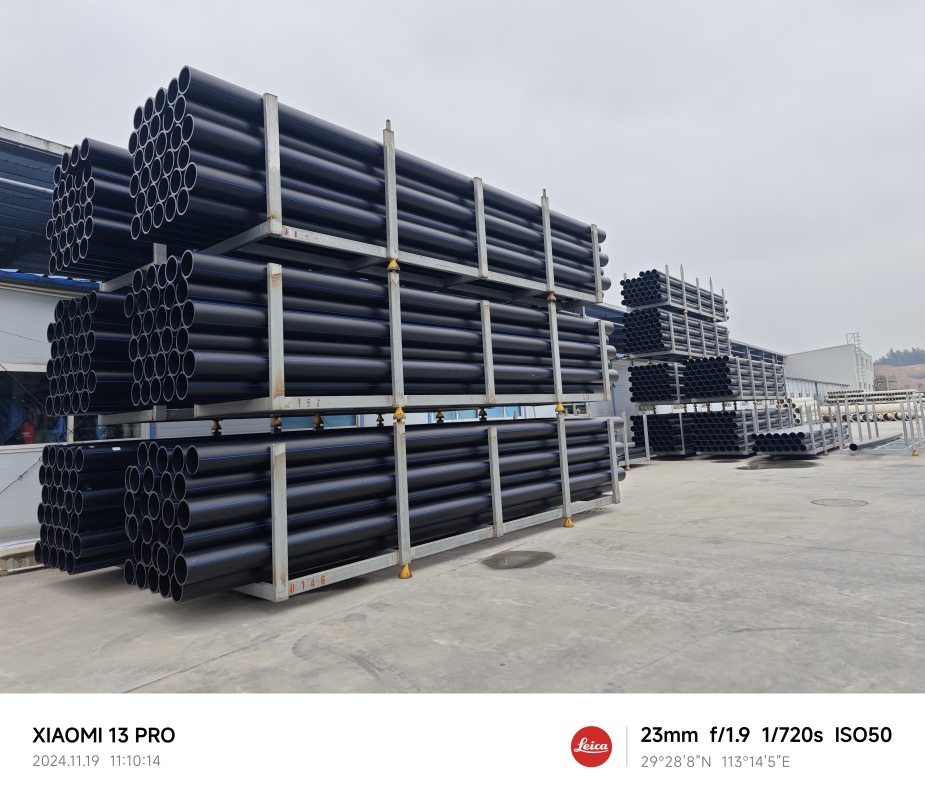
many friends will ask when planning the pipeline system: PE pipe is cheap and durable, can it be used to send steam? This question actually hides the key contradiction between the material characteristics and the use scenario - today we will explain the answer step by step from the essence of PE pipe and the requirements of steam. First, we must first understand what PE pipe is. The material of PE pipe is polyethylene, which is a commonly used thermoplastic. The advantages are obvious: corrosion resistance, good flexibility, easy installation, and the price is also close to the people, so it is widely used in water supply and drainage, gas transportation, agricultural irrigation and other scenarios. But it has a "natural short board": it is not resistant to high temperature. The melting point of PE pipes is about 120 ° C, and the upper limit of temperature for long-term safe use is even lower - ordinary PE pipes generally do not exceed 60 ° C. Even PE pipes marked "high temperature" are difficult to stably withstand temperatures above 80 ° C. Then look at the "temper" of steam: steam is not ordinary water, its temperature and pressure are directly linked. For example, the temperature of saturated steam under normal pressure is 100 ° C, but the pressure of steam used in industrial production or central heating is often higher (for example, the temperature of saturated steam at 0.5MPa is about 151 ° C, and 1MPa reaches 180 ° C). When these two data touch, the contradiction comes out: the temperature of steam far exceeds the safe temperature limit of PE pipes. So what will happen if the PE pipe is forcibly used to send steam? First, high temperature causes the PE pipe to soften and deform. PE is a thermoplastic material. When the temperature is high, it will lose its rigidity. The original round pipe may become flat and bulging, and the hot melt or electrofusion connection at the interface will also loosen, directly leading to steam leakage. The second is accelerated aging. In a long-term high temperature environment, the molecular structure of the PE pipe will be damaged, become brittle and cracked, and the lifespan will drop sharply from the original decades to several years or even months. What's more dangerous is that the steam itself has pressure, and the softened PE pipe cannot withstand the pressure impact at all. It is likely to suddenly break, and the high-pressure steam will cause burns, equipment damage, and even cause fire and other safety accidents. Some people may ask: "What about low-temperature and low-pressure steam? For example, the temperature is exactly 100 ° C, and the pressure is very low. Can it be used?" In fact, even if it can be used for a short time, it is not Because the PE pipe works at a temperature close to the melting point, the performance will continue to decline. There is no problem today, but it may fail tomorrow, and the safety hazard is too great. What pipe should I choose for sending steam? The answer is to choose a metal pipe or special plastic pipe that is resistant to high temperature and pressure. For example, seamless steel pipe (suitable for high-pressure high-temperature steam), stainless steel pipe (corrosion-resistant and high-temperature resistant), or PPR hot water pipe (if it is low-temperature steam with a temperature of 80 ° C, but choose a model with a rated temperature resistance of more than 100 ° C). To summarize: PE pipe is a good pipe, but it is not a "universal pipe". Its advantage is fluid transportation at room temperature and low pressure, while steam, a high-temperature and high-pressure medium, has to find a more "resistant" material. After all, the safety of the pipeline system is always more important than saving a little money.


